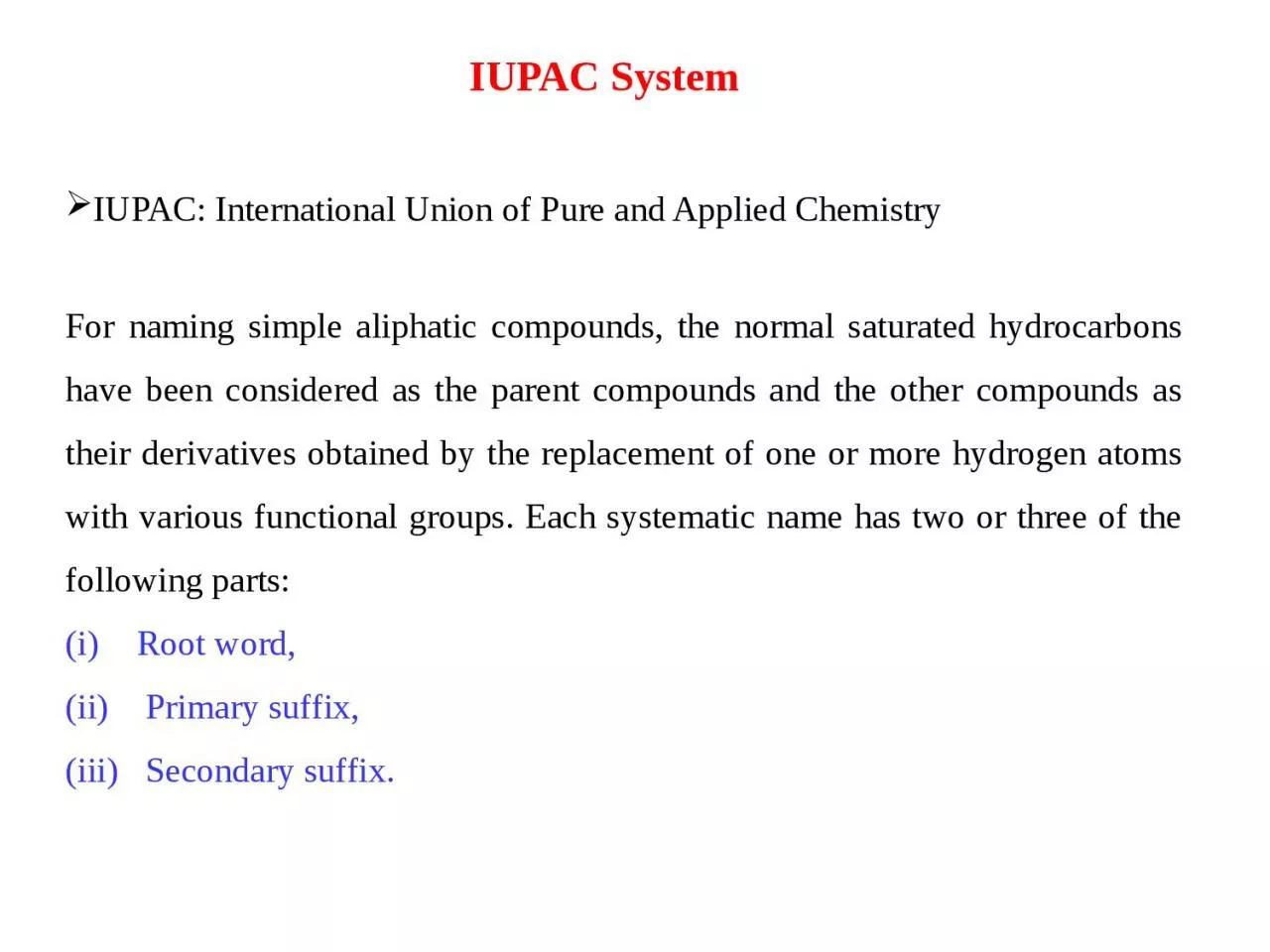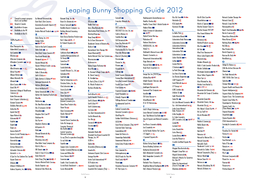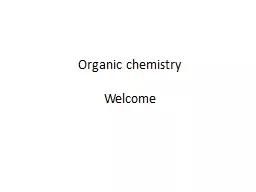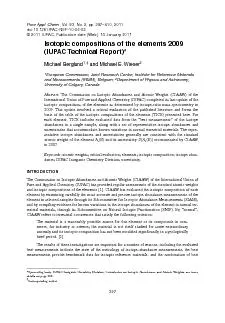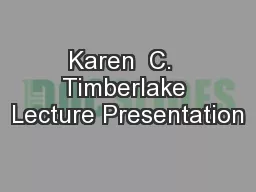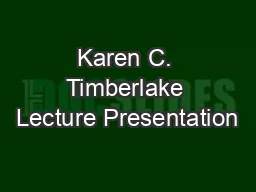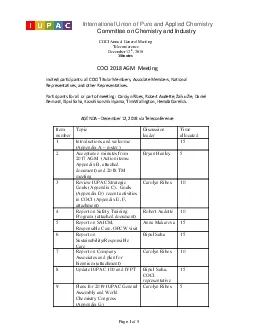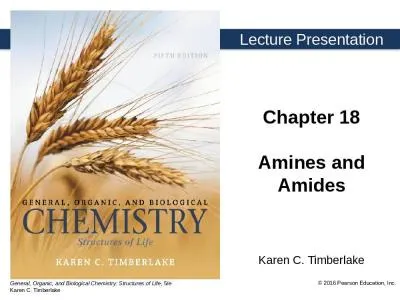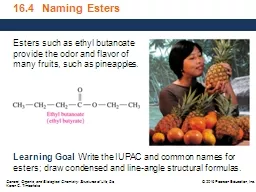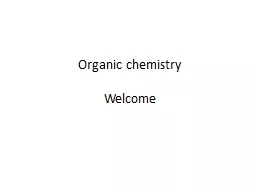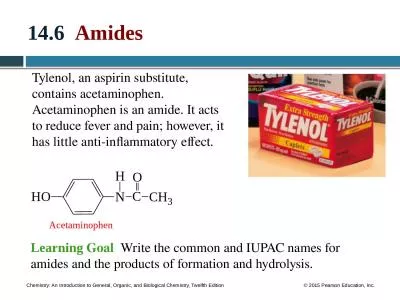PPT-IUPAC System IUPAC: International Union of Pure and Applied Chemistry
Author : Dragonfruit | Published Date : 2022-08-04
For naming simple aliphatic compounds the normal saturated hydrocarbons have been considered as the parent compounds and the other compounds as their derivatives
Presentation Embed Code
Download Presentation
Download Presentation The PPT/PDF document "IUPAC System IUPAC: International Union ..." is the property of its rightful owner. Permission is granted to download and print the materials on this website for personal, non-commercial use only, and to display it on your personal computer provided you do not modify the materials and that you retain all copyright notices contained in the materials. By downloading content from our website, you accept the terms of this agreement.
IUPAC System IUPAC: International Union of Pure and Applied Chemistry: Transcript
Download Rules Of Document
"IUPAC System IUPAC: International Union of Pure and Applied Chemistry"The content belongs to its owner. You may download and print it for personal use, without modification, and keep all copyright notices. By downloading, you agree to these terms.
Related Documents

